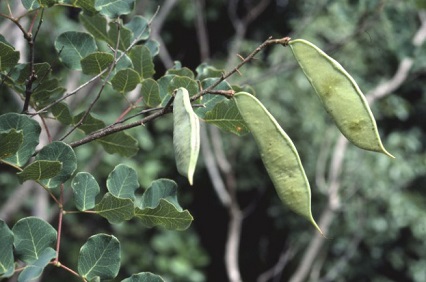Herbs And Phytochemicals: Agathisflavone From Catingueira Has Anti-Inflammatory Effect On Activated Microglia In Neuroinflammation And Alzheimer!
Nikhil Prasad Fact checked by:Thailand Medical News Team Mar 01, 2024 1 year, 1 month, 3 weeks, 3 days, 20 hours, 48 minutes ago
Herbs And Phytochemicals: Neuroinflammation, characterized by the activation of microglia and the release of inflammatory mediators, is a critical contributor to the pathogenesis of neurodegenerative diseases, including Alzheimer's disease (AD). MicroRNAs (miRNAs), pivotal post-transcriptional regulators of gene expression, have emerged as key players in the intricate landscape of neuroinflammation. In this
Herbs And Phytochemicals study, the researchers delve into the profound impact of agathisflavone, a biflavonoid extracted from the leaves of Cenostigma pyramidale (Tul.), commonly known as Catingueira, on the modulation of miRNAs and inflammatory mediators in activated microglia.
 Catingueira (Cenostigma pyramidale)
Research Institutions Involved
Catingueira (Cenostigma pyramidale)
Research Institutions Involved
The collaborative efforts of esteemed institutions, including the Federal University of Bahia-Brazil, Federal University of Vale do São Francisco-Brazil, São Rafael Hospital-Brazil, Instituto Gonçalo Moniz, Fundação Oswaldo Cruz-Brazil, National Institute of Translational Neuroscience-Brazil, University of Portsmouth-UK, and Instituto de Ciências da Saúde-Brazil, have played a crucial role in unraveling the therapeutic potential of agathisflavone.
MicroRNAs in Neurodegenerative Diseases
Microglial activation, particularly towards a proinflammatory profile, is a hallmark of neurodegeneration. Proinflammatory microglia release cytokines, chemokines, and other mediators, with miRNAs being implicated in the regulation of these processes. Numerous studies have underscored the role of miRNAs as critical regulators and risk factors in neurodegenerative diseases, including Alzheimer's and Parkinson's diseases. Additionally, miRNAs have been implicated in the modulation of the JAK2/STAT-3 signaling pathway, influencing inflammatory responses in microglia.
Flavonoids as Neuroprotective Agents
Flavonoids, a class of polyphenolic compounds found in various plant species, have demonstrated diverse biological effects, including anti-inflammatory, antioxidant, antitumor, antimicrobial, and antiviral actions. Within the realm of neuroprotection, flavonoids have shown promise in modulating the expression of miRNAs and mitigating proinflammatory responses in microglial cells. The biflavonoid agathisflavone, extracted from Catingueira leaves, has been identified in previous studies as neuroprotective and anti-neuroinflammatory, primarily linked to its modulation of microglial inflammatory profiles.
Agathisflavone's Impact on Microglial Activation
The study investigated the effects of agathisflavone on C20 human microglia exposed to β-amyloid peptide (Aβ) oligomers or lipopolysaccharide (LPS). Activation of microglia by these neuroinflammatory stimuli led to an increase in the expression of miR-146a, miR-155, IL1-β, IL-6, and NOS2. Agathisflavone treat
ment exhibited a significant reduction in miR146a and miR-155, as well as inflammatory cytokines IL1-β, IL-6, and NOS2. Remarkably, in Aβ-stimulated cells, agathisflavone attenuated the increase in p-STAT3 expression, highlighting its role in modulating the JAK2/STAT-3 pathway.
Impact on Cell Morphology and Viability
Agathisflavone's influence on cell morphology and viability was assessed using phase-contrast microscopy and the MTT assay. Microglia treated with LPS or Aβ displayed an amoeboid morphology indicative of activation, while agathisflavone co-treatment maintained a more branched and less reactive morphology. Moreover, agathisflavone mitigated the decrease in cell viability induced by LPS and increased viability in Aβ-treated cells.
Modulation of miRNA Expression and Inflammatory Cytokines
Agathisflavone's regulatory effects extended to the expression of miR146a and miR155, with a complete blockage of the increase induced by Aβ or LPS. Furthermore, the flavonoid significantly altered the expression of inflammatory cytokines IL-1β, IL-6, and NOS2 in microglia cultures subjected to Aβ damage. The most pronounced effect was observed in the complete inhibition of NOS2 expression by agathisflavone, emphasizing its potent anti-inflammatory properties.
Inhibition of STAT3/pSTAT3 Expression
The study also investigated whether agathisflavone modulates the expression of STAT3 and phosphorylated STAT3 (p-STAT3). Aβ-induced microglial cultures exhibited an increased p-STAT3/STAT3 ratio, which was reduced by agathisflavone treatment. This finding underscores the importance of agathisflavone in regulating inflammatory processes through the JAK2/STAT-3 signaling pathway.
Discussion and Implications
Microglia, essential in the immune defense of the central nervous system (CNS), undergo activation in response to insults, contributing to neuroinflammation. The presented study establishes that Aβ and LPS induce microglial activation, characterized by morphological changes, altered cytokine profiles, and increased expression of miR-146a and miR-155. Agathisflavone emerges as a potent modulator, significantly inhibiting microglial activation, maintaining a ramified morphology, and downregulating proinflammatory states, particularly NOS2.
The study also sheds light on the intricate relationship between miRNAs and microglial activation, emphasizing miR-146a and miR-155 as key players in the antineuroinflammatory effects of agathisflavone. Furthermore, agathisflavone's regulation of the JAK2/STAT-3 pathway adds another layer of complexity to its multifaceted neuroprotective mechanisms.
Conclusion
In conclusion, agathisflavone from Catingueira demonstrates promising anti-inflammatory effects on activated microglia, providing a potential avenue for therapeutic interventions in neuroinflammatory conditions, including Alzheimer's disease. The collaborative efforts of diverse research institutions have contributed valuable insights into the intricate interplay between flavonoids, miRNAs, and microglial activation, paving the way for future investigations and targeted drug development in the realm of neurodegenerative diseases.
The study findings were published in the peer reviewed International Journal of Molecular Sciences.
https://www.mdpi.com/1422-0067/25/5/2547
For the latest on
Herbs And Phytochemicals, keep on logging to Thailand Medical News.
